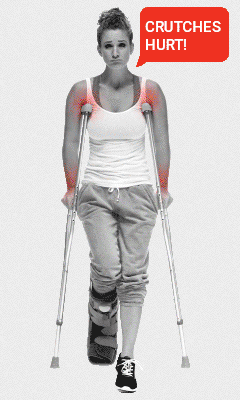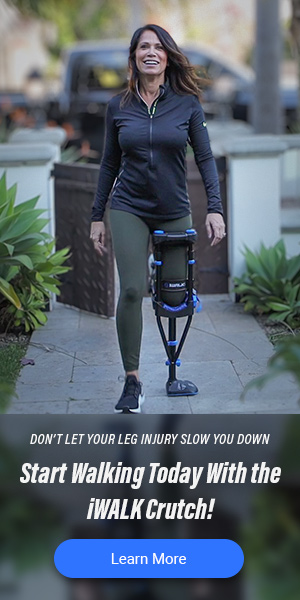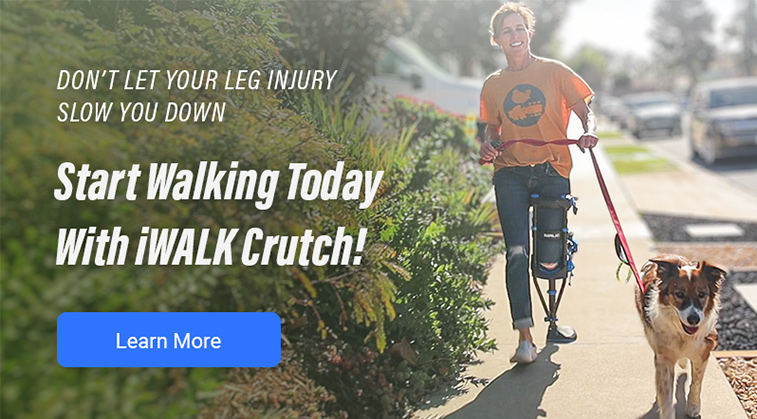Lower Leg Injury Resource Center
Avulsion Fracture of the Ankle
Symptoms, Causes, Treatments, Surgery and Recovery
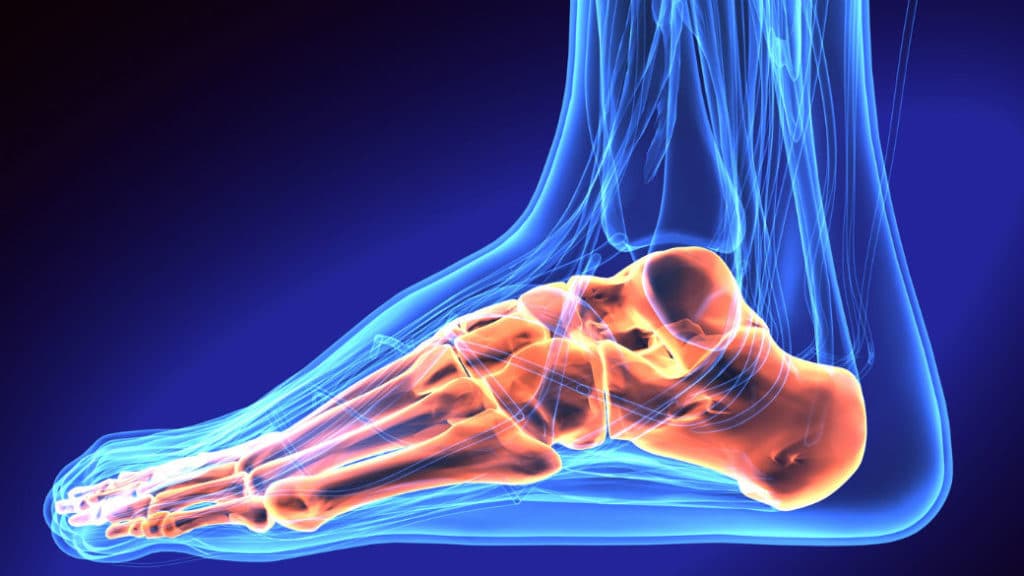
An avulsion fracture occurs when a tendon or ligament fractures off a piece of the bone to which it’s attached. Avulsion fractures of the ankle are often caused by a twisting motion and commonly affect the lower ends of the tibia or fibula, areas called the medial and lateral malleolus. [1]
Ankle injuries resulting in an avulsion fracture frequently happen during sudden movements and changes in direction. Though more common in children, athletic adults are also prone to avulsion fractures. This type of fracture can happen anywhere a tendon or ligament is attached to a bone, but they most commonly affect ankles, elbows and joints around the pelvis, especially the hips. [2]
Avulsion Fracture Table of Contents
I
WHAT IS AN AVULSION FRACTURE?
An avulsion fracture, also known as a sprain fracture, is a detachment of bone fragment that occurs when a ligament, tendon or joint capsule pulls away from its point of attachment.
The injury occurs at the site where a tendon or ligament attaches and happens because the tendon or ligament pulls abruptly and breaks a piece of bone away. [3]
An avulsion fracture of the ankle most often affects the medial malleolus, the inner side of the ankle at the lower end of the tibia. They also sometimes involve the lateral malleolus, the outside of the ankle on the fibula; or the talus, the bone in your upper foot.
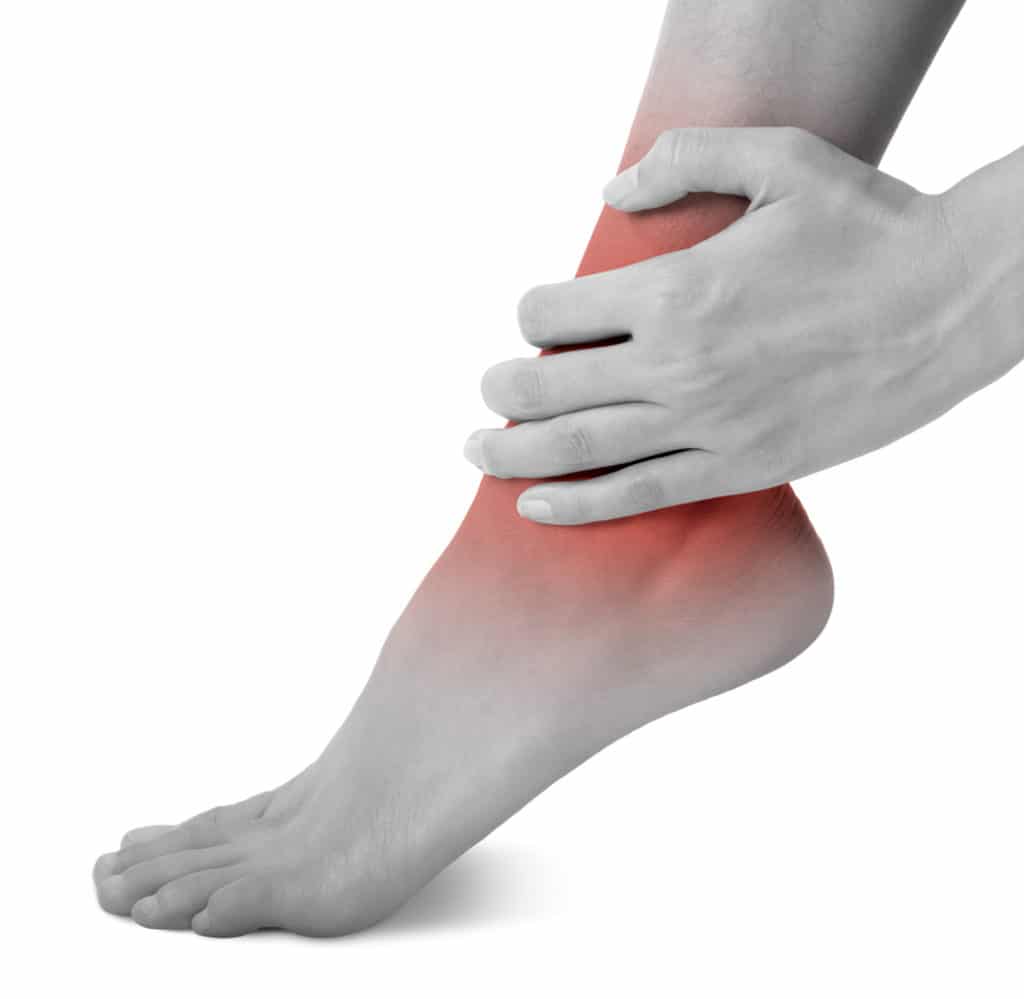
I
WHAT CAUSES AVULSION FRACTURES?
Unlike stress fractures that occur gradually due to repetitive motion and impact, an avulsion fracture is the result of sudden movement. An Avulsion fracture of the ankle is also often the result of a sudden change in direction and twisting of the ankle.
Growing children are at higher risk of avulsion fractures than adults. As they grow, their ligaments and tendons may pull against the bones to which they’re attached. This compromised musculoskeletal structure can be problematic when growing children participate in sports, leaving them susceptible to avulsion fractures.
Though more common in children, athletic adults may also experience avulsion fractures when their tendons are able to bear more load than their bones. Avulsion fractures usually occur during high-impact sports that include twisting movements and quick changes of directions. Dancers are also at risk for avulsion fractures because of the dynamic and explosive movements that are often involved.
I
WHAT DOES AN AVULSION FRACTURE FEEL LIKE?
Symptoms of an avulsion fracture of the ankle can be felt from the moment the trauma occurs and can be very painful.
Because the injury is likely the result of a twisting movement, avulsion fracture ankle pain may present similar to an ankle sprain. [4] In both types of injuries, common symptoms include:
- Strong, sudden ankle pain
- Swelling and bruising
- Difficulty moving the ankle joint
- Pain when trying to move the ankle
- Instability of the ankle joint
- Numbness and tingling
To distinguish between an avulsion fracture and an ankle sprain, your doctor will perform a physical examination of your ankle. After determining if you can bend and straighten the joint, your doctor may order X-rays. It’s not uncommon at this stage to discover an old avulsion injury that went undiagnosed.
It’s important to ask for X-rays if you are concerned you may have an avulsion fracture. Misdiagnosis can lead to permanent nerve damage, as well as long-term difficulty walking and running. If you have an avulsion fracture of the ankle, proper diagnosis and treatment are necessary for a full recovery.
I
HOW TO TREAT AN AVULSION FRACTURE OF THE ANKLE
As with an ankle sprain, initial treatments for an avulsion fracture of the ankle involve using the Rest, Ice, Compression, Elevation (RICE) method.
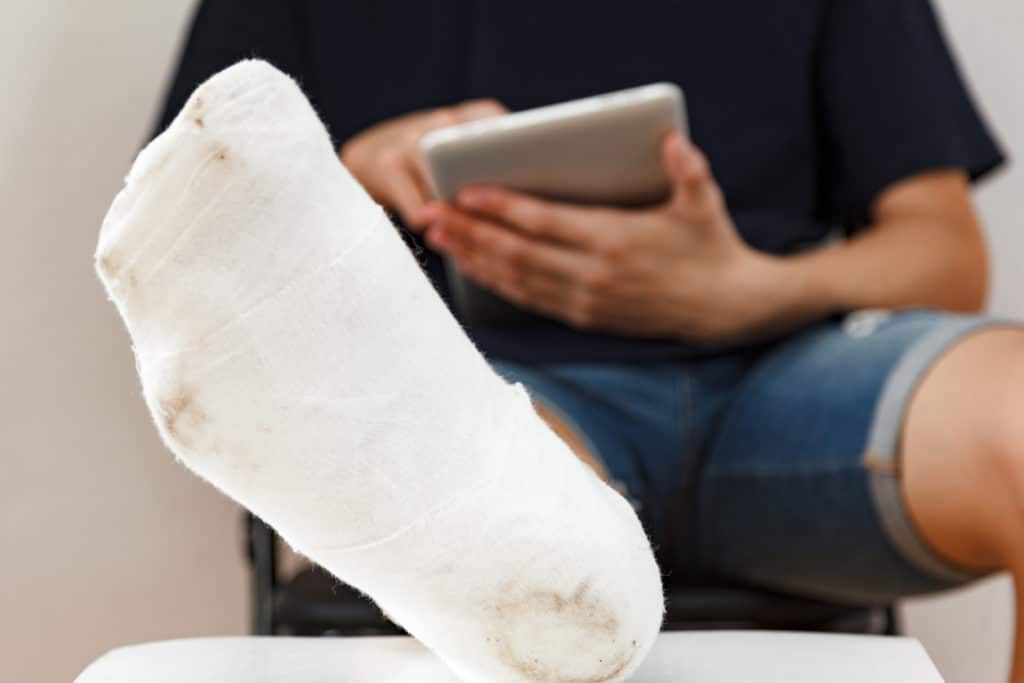
Rest
Rest is an essential part of the healing process for all manner of injuries, and in particular for an avulsion fracture of the ankle. Standing walking and running put considerable stress on the ankle joint.
Ice
Icing your ankle for 10-minute periods followed by 10 minutes of rest reduces swelling when the injury first occurs. It’s important to be cognizant of how long you’re icing the injury. Periods longer than 10 or 15 minutes can cause additional swelling as the body tries to prevent hypothermia. Protect your skin by using a protective barrier like a cloth and only ice for short periods.
Compression
Compression helps prevent further swelling and to stabilize the injury. When the avulsion fracture occurs, immediately wrap your ankle with a compression wrap or elastic bandage. This will also help to minimize pain because it holds your ankle in place and limits movement.
Elevation
Keeping your injured ankle above your heart will help drain excess blood from the injury and reduce swelling as you recover. Lie on your back and prop your injured ankle on a stack of pillows.
I
CAN I WALK WITH AN AVULSION FRACTURE OF THE ANKLE?
Limiting movement of your ankle as it recovers is essential to healing and recovery.
An ankle brace for an avulsion fracture may help, but your doctor will likely prescribe use of an orthopedic walking boot. This will protect the ankle and keep it stable so it can heal properly. With children, if the avulsion fracture is severe, casts may be used in place of a boot. [5]
Most avulsion fractures of the ankle will also require a period when you can’t put any weight at all on the injured joint. This means you’ll have to consider a range of mobility devices to help you get around and improve your odds of a full recovery.
Traditional Crutches
Traditional crutches are common among individuals with lower leg injuries, including avulsion fractures of the ankle, but they may not be the most effective mobility aid for this injury.
The most frequently-lodged complaint among those using crutches involves pain in the hands and forearms. Additionally, because it’s difficult to perform activities that require the use of your hands when using traditional crutches, people often stand on their injured leg. Done even momentarily, this can easily cause re-injury or prolonged healing time because pressure on the bone can interfere with healing.
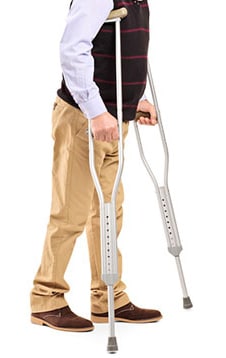
Knee Scooters or Knee Walkers
Knee scooters, also called knee walkers, are popular because they eliminate the pain and soreness of traditional crutches. To use a knee scooter, you bend your injured leg 90 degrees at the knee and kneel on a platform. That platform is attached to a frame with four wheels, and you use handlebars to steer.
Many people prefer knee scooters over traditional crutches. However, there are still disadvantages. Both hands are required to control the device. Knee scooters are also bulky, which can create unnecessary challenges getting in and out of a car. Finally, a knee scooter’s turning radius limits its use in tight spaces, and it can’t be used on stairs or uneven terrain.
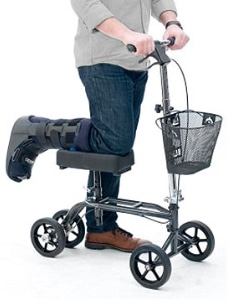
iWALK Hands-Free Crutch
The iWALK hands-free crutch is a pain-free alternative to traditional crutches.
Similar to knee scooters, the iWALK requires users to kneel on a platform, but that’s where similarities end. The iWALK crutch has a strut connected to a simple prosthetic foot with a curved sole that simulates a natural walking gait. The user’s leg is strapped into the device, which makes the strut and foot an extension of the user’s leg, like a high-tech pirate leg. With the iWALK crutch, the hands are free while walking and standing, making daily tasks like taking out the trash, walking the dog, cooking and cleaning easy.
Clinical trials have revealed that people with lower leg injuries using a hands-free crutch experience greater blood flow, less muscle atrophy and faster healing than with conventional crutches. Moreover, retaining mobility and independence is a significant benefit that improves mood and reduces or eliminates cheating.
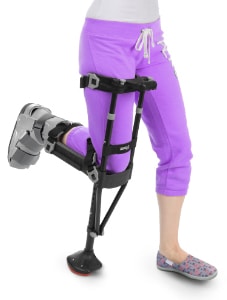
I
DO AVULSION FRACTURES REQUIRE SURGERY?
Avulsion fractures usually do not require surgery. Most often, stabilizing the ankle and remaining non-weight bearing as it heals will be enough for a full recovery. In rare cases, however, surgery may be necessary. This happens when the fracture has pulled too far from the bone for it to reconnect and fuse naturally. [7]
Surgical methods to repair a more serious avulsion fracture of the ankle involve forms of Open Reduction Internal Fixation (ORIF) surgery. These methods use screws, steel wires, tension bands, sutures or other mechanical anchors to stabilize the injured bone and tendon while they fuse back together. [8]
I
HOW LONG DOES IT TAKE FOR AN AVULSION FRACTURE OF THE ANKLE TO HEAL?
An avulsion fracture of the ankle can take between three and 12 weeks to heal. Most often, those with orthopedic walking boots or casts will need to wear them for six to eight weeks. [9] If surgery is involved, recovery may take longer.
When the cast or walking boot is removed, a period of rehabilitation is required. Often, a physical therapist will help you strengthen your injured ankle with an exercise regimen. Rehabilitation will retrain your walking gait, retune your balance, and return flexibility to the muscles and tendons of your ankle. Rehabilitation is necessary because it helps prevent re-injury. [10]
Unfortunately, there’s no shortcut to healing. Your body will need time to repair the injury, and attempting to rush your recovery will only result in prolonging it. The best thing you can do during this period is to follow your doctor’s orders, use the Rest, Ice, Compression, Elevation (RICE) method, and keep weight off your injured ankle with the use of crutches or the iWALK hands-free crutch.
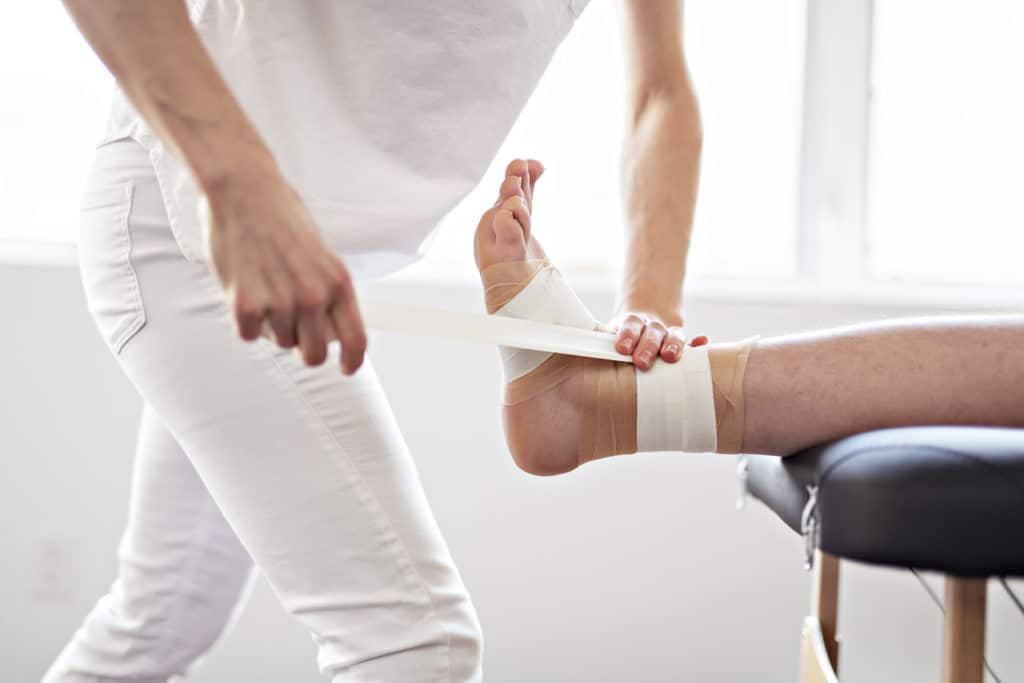
I
ANKLE AVULSION FRACTURE SUMMARY
Sometimes overlooked or misdiagnosed as an ankle sprain, it’s important to ask for an x-ray if you suspect you may have an avulsion fracture of the ankle. Rest is vital to recovery, and healing will require that you keep weight off your injured ankle for a specified period.
A severe avulsion fracture may require surgery. More often, however, your doctor will prescribe use of a walking boot or cast to stabilize your ankle, along with a mobility device that makes sure you keep weight off the injury during the healing process.
The information above is intended for informational purposes only and is not intended to prevent, treat, or diagnose any illness or disease. We aim to provide the highest quality information, so if you have any questions on the information above, we welcome your feedback!
I
RESOURCES
- Physiopedia. Avulsion Fractures of the Ankle. Accessed 23 June 2021. https://www.physio-pedia.com/Avulsion_Fractures_of_the_Ankle
- Nancy M. Major, Mark W. Anderson, Clyde A. Helms, Phoebe A. Kaplan, Robert Dussault. 8 – Osseous Trauma. Musculoskeletal MRI (Third Edition). Elsevier. 2020. Pages 165-185. ISBN 9780323415606. https://doi.org/10.1016/B978-0-323-41560-6.00008-1
- Healthwise staff. University of Michigan Health. Avulsion Fracture. 26 February 2020. https://www.uofmhealth.org/health-library/abr6579
- Stephanie Watson and William Morrison, M.D. Avulsion Fracture. Healthline. 18 September 2018. https://www.healthline.com/health/avulsion-fracture
- Scott Kuntz, M.D. 3 Useful Tips for Icing Your Injury. Sports Health. 26 October 2015. https://www.sports-health.com/blog/3-useful-tips-icing-your-injury
- Healthwise staff. My Health Alberta. Learning About Avulsion Fractures. 2 March 2020. https://myhealth.alberta.ca/Health/aftercareinformation/pages/conditions.aspx?hwid=abs0078
- Edward R. Laskowski, M.D. Avulsion Fracture: How is it Treated? Mayo Clinic. 2 July 2020. https://www.mayoclinic.org/avulsion-fracture/expert-answers/faq-20058520
- Yin, Q., Rui, Y., Wu, Y. et al. Surgical treatment of avulsion fracture around joints of extremities using hook plate fixation. BMC Musculoskelet Disord 20, 200 (2019). https://doi.org/10.1186/s12891-019-2585-1
- Lana Burgess and William Morrison, M.D. Avulsion Fracture: What You Need to Know. Medical News Today. 20 September 2017. https://www.medicalnewstoday.com/articles/319471.php
- Ankle Sprain/Avulsion Fracture. Orthopaedic Center of Southern Illinois. Accessed 23 June 2021. https://orthocenter-si.com/content/ankle-sprainavulsion-fracture

